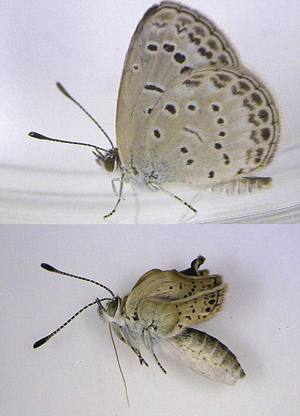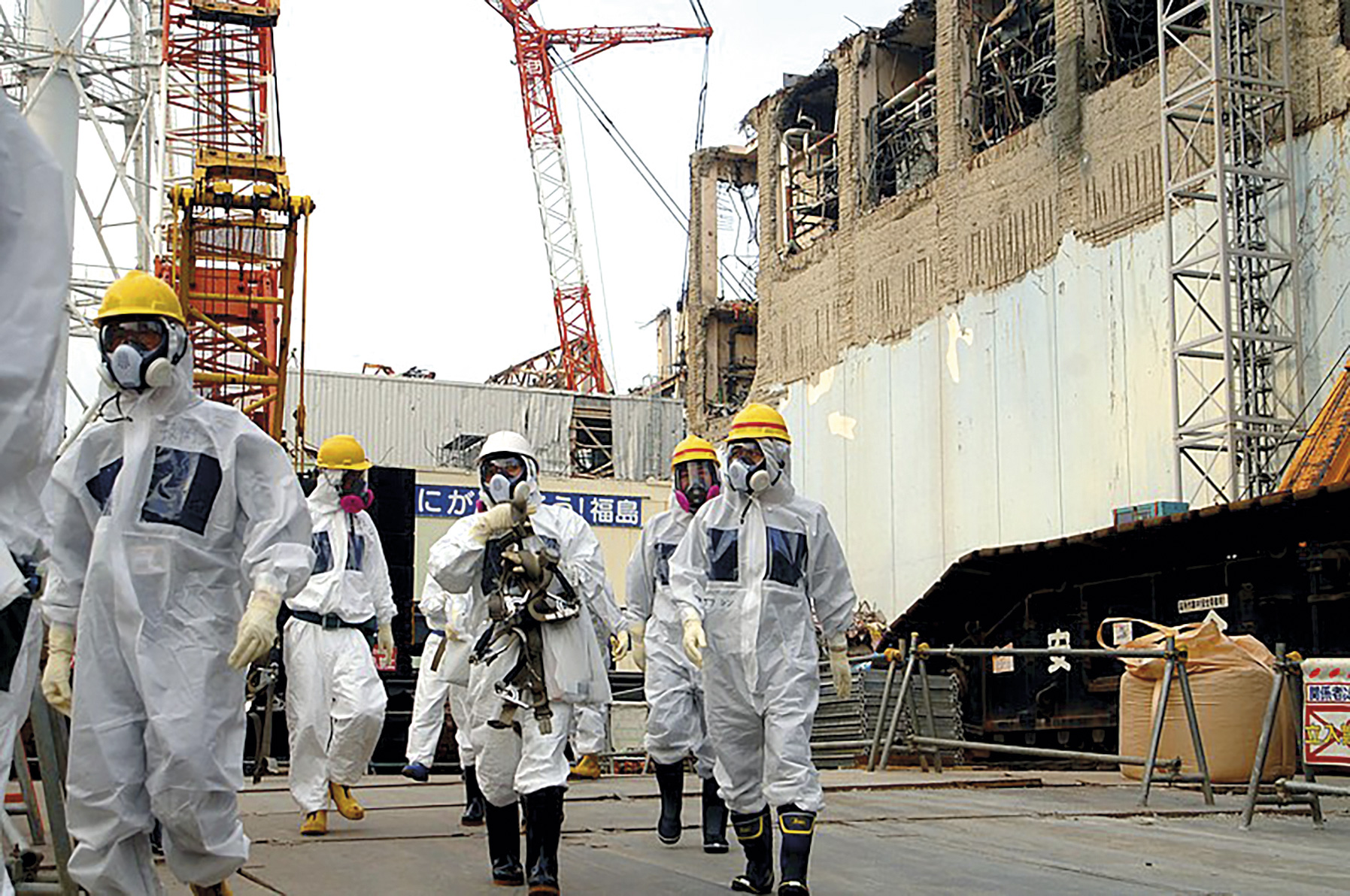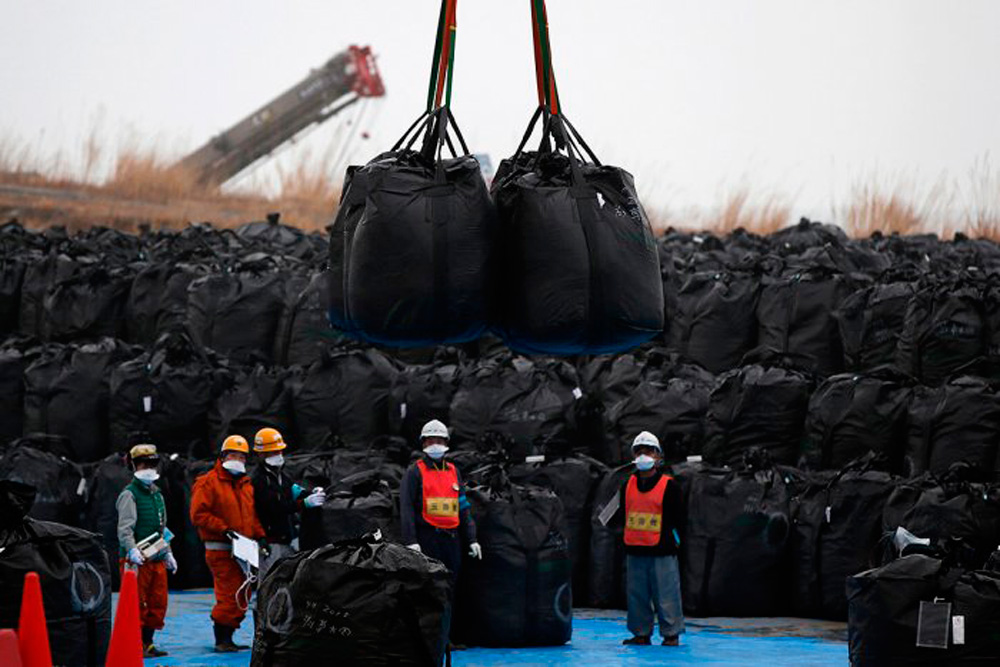Mutant butterflies in Fukushima... and probably in Garoña
- August 2012 brings a new monster in the shadow of the mythic Loch Ness: Pseudoscience grape. The mutant bluish butterfly of the prairies known as pale grass blue butterfly has become a symbol of the consequences of radioactive contamination in Fukushima. Here's a bug that shows what future human beings have to adapt to.

A team from the University of Okinawa has conducted a study on the specialized journal Scientific Reports and in August media from all over the world have given the air to the discovery. The British television channel BBC has entitled: 'Severe abnormalities' found in Fukushima butterflies (Fukushima butterflies have found severe abnormalities). He has even reminded the most temperate that in that distant Japan people will not be able to forget the nuclear catastrophe while they live.
If light is lucky readers who teach it where to do it. This time, I.M. told us. (Thank you very much, old friend) from Switzerland: A professor from Zurich has long been showing in such beautiful and striking images the mutations suffered by English in the vicinity of European nuclear power stations. But Cornelia Hesse-Honegger will introduce it later to the reader.
Published by Scientific Reports, it is the result of a group of researchers from the University of Ryukyus on the island of Okinawa. In May 2011, the researchers, led by Professor Joji Otaki, collected 144 chipiris of the species Pseudociizeeria Maha in the vicinity of the Fukushima Dai-ichi Power Plant, two months after the accident. Six months later, more butterflies reappeared and compared the mutations found in the bugs captured in the two sessions. At the same time, 1,750 kilometres from the scene of the accident, in the university laboratory, similar doses of Fukushima radiation were administered to butterflies of the same species for comparisons.
In May 2011, they found that some adults in Pseudocytia had medium abnormalities, while children born after the accident had more severe abnormalities. In the month of September, again, more damage was found in insects. At 1,750 kilometers from there, they discovered the same phenomenon among the Pseudociers who grew irradiated in the laboratory.
Researchers have wanted to find out what happens to a bug that lives surrounded by low radiation and is being studied. Since the Chernobyl accident, and before the explosions of the atomic bombs in Hiroshima and Nagasaki, no one denies that radiation causes great damage to living beings. But there is still great controversy about the effects of lower radiation.
They have chosen a simple butterfly because of its abundance throughout Japan and because of the colors of its slopes, which easily reflect changes in the environment. The blue-grass butterfly has already been used previously, for example, to measure the risks of GM maize pollen.
“We have demonstrated – says the research work that is easily obtained on the Internet – that the population of pseudocyte grapes is deteriorating in both physiology and genetics in the vicinity of Fukushima, probably due to artificial radiation discharged by the nuclear power plant. (...) In the early offspring there are abnormalities that the parents did not have, indicating that the genetic damage occurred to pinpilipaux when they were in egg.” The March atomic disaster, which affected his parents, added to that of the particles internalized by the ingestion of contaminated leaves.
The ones in the worst egg
The malformations of the Fukushima butterflies, like those of the wings, are spectacular in the photos that the media have shown. Many morphological mutations have been found in eyes, antennas, legs, etc. Damage has also been noted in the reproductive system: sterile females have multiplied and the deadlines for hatching eggs have changed.
It is noteworthy that mutations are inherited from generation to generation. This can only explain that in September 2011, when radioactivity was lower in the area, stronger and more numerous mutations were found in the caught bugs than in May. Pseudoscience has a month of life.
In the main media it has been read that, in the few occasions when they have gone beyond the anecdote, researchers have been surprised by the damage caused by low radiation. It's a lie. In the document The biological impacts of the Fukushima nuclear accident on the pale grass blue butterfly, researchers state that their previous studies have suggested similar conclusions to those of recent years.
It is well documented that the number of insects has been greatly reduced in the Chernobyl area since the disaster. But it's not just a matter of places where a big atomic accident has happened to them. Close to the plants we have in Europe, the Swiss Cornelia Hess-Honegger has long shown that bugs have malformations in their drawings.
The scientific illustrator of the Museum of Natural History of the University of Zurich, María Cristina Uriarte, has shown in very nice drawings the curious people who have gathered in the vicinity of the plants following the Chernobyl accident. In 2002 he published images in the precious and expensive book Heteroptera. Together with Peter Wallimann published Malformation of True Bug (Heteroptera): a Phenotype Field Study on the Possible Influence of Artificial Low-Level Radioactivity in 2002 in the journal Biochemistry & Biodiversity.
Hesse-Honegger says he saw the light of the calling when the Chernobyl nuclear power station broke out in 1986. At that time, many experts thought that the radioactivity of the site would have small effects on insects. However, Hesse-Honegger found strange malformations in the Swedish regions where radiation fell. Since then, it has continually enquired about the morphological abnormalities of insects around the world.
It has collected more than 16,000 heteroptera - butterflies are of another order in the bugs, the lepidopterans - it has analyzed them and detected the malformations they contain. Over 300 of them have been presented in the galleries with beautiful images.
What is striking is that many of the tullids of the images have not met in Chernobyl or in the regions where the radiation has fallen: The finding has occurred in the vicinity of the nuclear power stations in Switzerland (Aargau), France (La Hague) and Germany (Grundremmingen). The author explains that “one third of the insects studied in some places had some breakdown, missing pieces of leg, malformed wings, body without symmetry, wounds, stains, strange colors”. In Europe.
There is no news of the bugs in the Garoña area. It is not known whether they have been investigated.

























